In today’s data-driven world, businesses rely on data warehouse solutions to unlock the full potential of their information.Data warehouses centralize and organize data, providing a single source of truth that enhances decision-making and analytics.Here are several data warehouse solutions you can try:
- FineDataLink
- Google BigQuery
- Amazon Redshift
- Snowflake
- Azure Synapse Analytics
These platforms centralize and organize vast amounts of data, enabling you to make informed decisions and drive growth. To build an efficient data warehouse, you also need robust data integration tools. FanRuan's FineDataLink empowers you to synchronize and transform data seamlessly, ensuring a high-quality foundation for analytics and business intelligence. To learn more about data warehouse solutions, please click the button below.

What is a Data Warehouse and Why Do Businesses Need One?
Definition of a Data Warehouse
A data warehouse serves as a centralized repository where data from multiple sources is collected, organized, and stored.
Data warehouses systematically organize data into tables based on type and layout, ensuring consistency and accessibility. By consolidating disparate data sources, they create a unified view of your organization’s information. This unified structure allows you to extract actionable insights, whether you’re analyzing historical trends or preparing for future opportunities. To learn more about data warehouse solutions, please click the button below.

Key Benefits of Using a Data Warehouse
Centralized Data Storage and Management
A data warehouse eliminates the challenges of fragmented data by consolidating it into a single, centralized location. This approach ensures that all your data is accessible in one place, reducing the time spent searching across multiple systems. With centralized storage, you can maintain a cloud-based infrastructure that supports seamless integration and scalability.
Enhanced Data Analytics and Decision-Making
By providing a single source of truth, they enhance the accuracy and reliability of your data analytics efforts.
Scalability for Growing Data Needs
As your business grows, so does the volume of data you generate. Modern cloud data warehouses offer scalable solutions that adapt to your evolving needs. They handle vast amounts of data efficiently, ensuring optimal performance even as your requirements expand. This scalability makes them ideal for businesses of all sizes, from startups to large enterprises.
Common Use Cases for Data Warehouses
Business Intelligence and Reporting
Data warehouses play a pivotal role in analytics use cases like business intelligence (BI) and reporting. By organizing data neatly, they make it easier to generate detailed reports and conduct in-depth analyses. For example, you can use a data warehouse to track monthly sales performance or evaluate the success of marketing campaigns. These insights help you identify trends and make data-driven decisions.

Real-Time Analytics
With advancements in data processing, data warehouses now support real-time analytics. This capability allows you to monitor key metrics and respond to changes as they happen. For instance, you can track website traffic in real time or analyze customer interactions during a live event. Real-time analytics ensures that your business stays agile and responsive.
Machine Learning and AI Applications
Data warehouses provide the robust infrastructure needed for machine learning and AI applications. By storing large volumes of historical data, they enable you to train algorithms and develop predictive models. These models can uncover patterns and trends, helping you optimize operations and improve customer experiences. Whether you’re building recommendation systems or automating processes, a cloud data warehouse serves as the backbone of your AI initiatives.
Overview of Top Data Warehouse Solutions in 2025
When selecting a data warehouse solution, understanding the unique strengths of each platform is essential.
1.FanRuan's FineDataLink for Real-Time Data Warehouse Integration
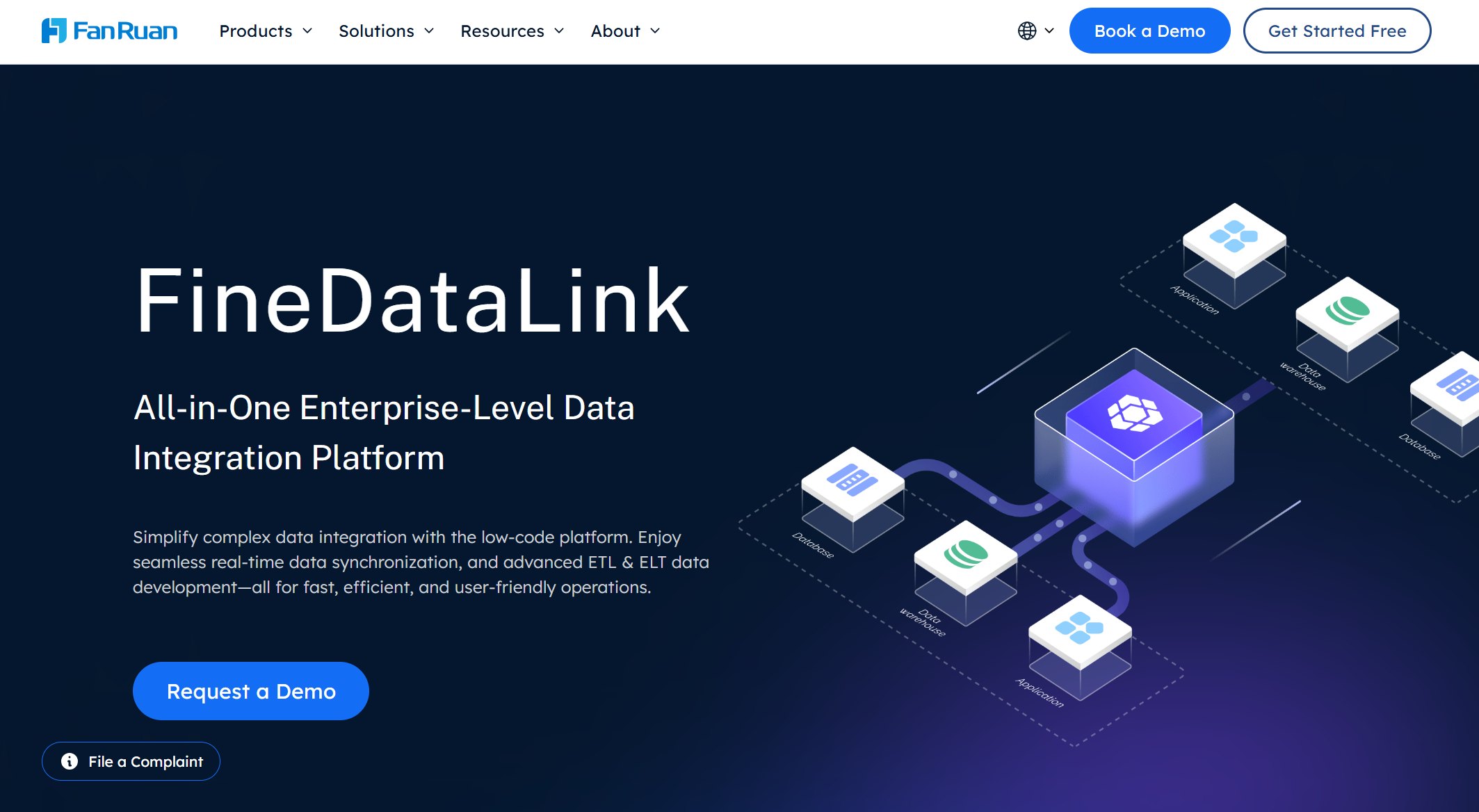
Website: https://www.fanruan.com/en/finedatalink
FanRuan's FineDataLink revolutionizes how you integrate and manage data for real-time analytics. This platform specializes in data integration, offering real-time synchronization and advanced ETL/ELT capabilities. FineDataLink enables you to consolidate data from multiple sources into a unified structure, creating a strong foundation for your data warehouse.
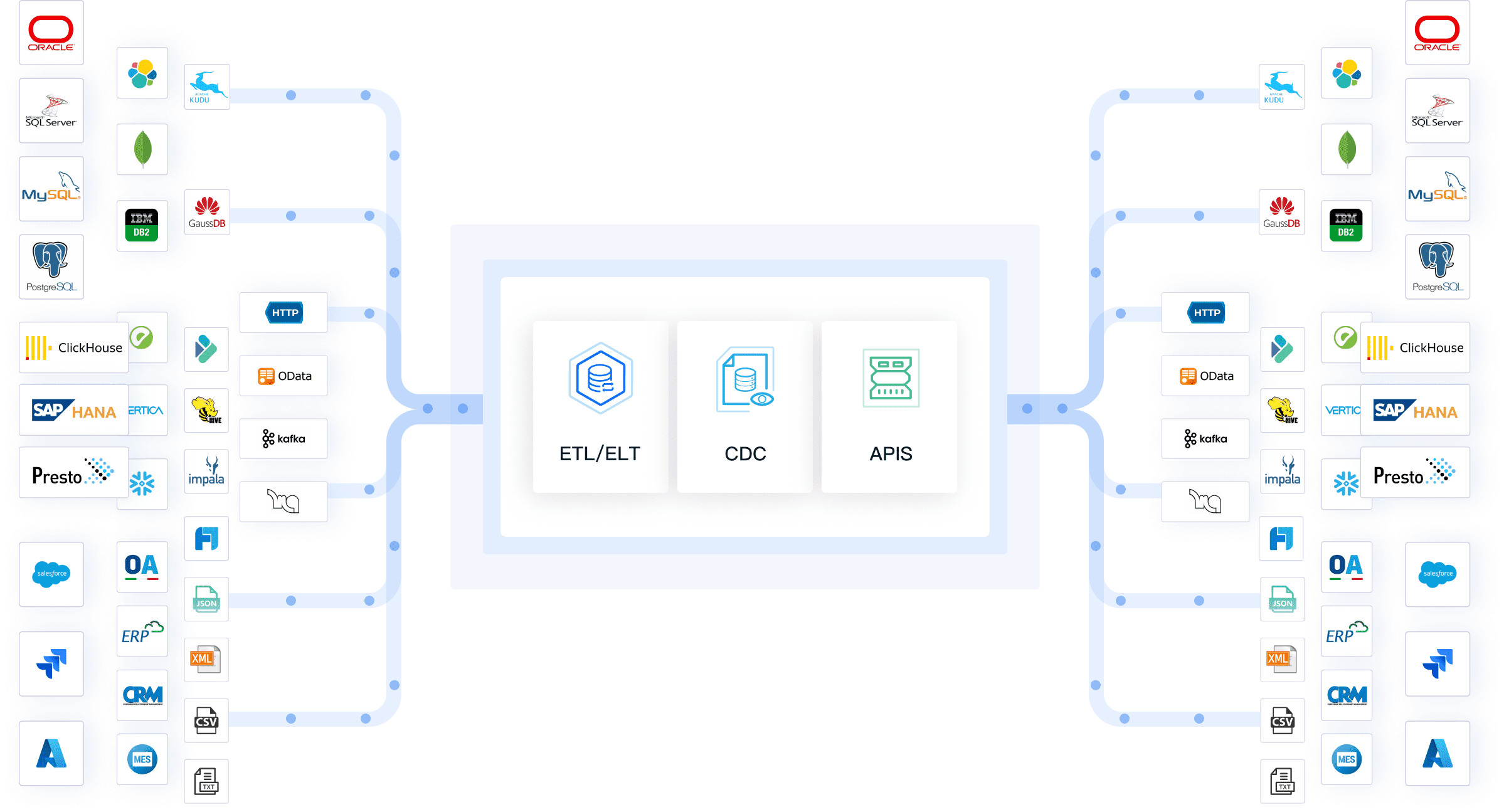
FineDataLink’s low-code interface simplifies complex tasks, allowing you to build data pipelines with minimal effort. Its support for over 100 data sources ensures compatibility with diverse systems, making it a versatile tool for businesses of all sizes. Whether you’re migrating databases or building a real-time data warehouse, FineDataLink provides the tools you need to succeed.
One of its key advantages is its ability to handle real-time workloads. FineDataLink processes data with minimal latency, ensuring that your analytics remain up-to-date. This capability is crucial for businesses that rely on real-time insights to make decisions. Additionally, its API integration feature allows you to share data across systems effortlessly, enhancing collaboration and efficiency.
By streamlining data integration and synchronization, it helps you focus on deriving value from your data management rather than managing infrastructure.
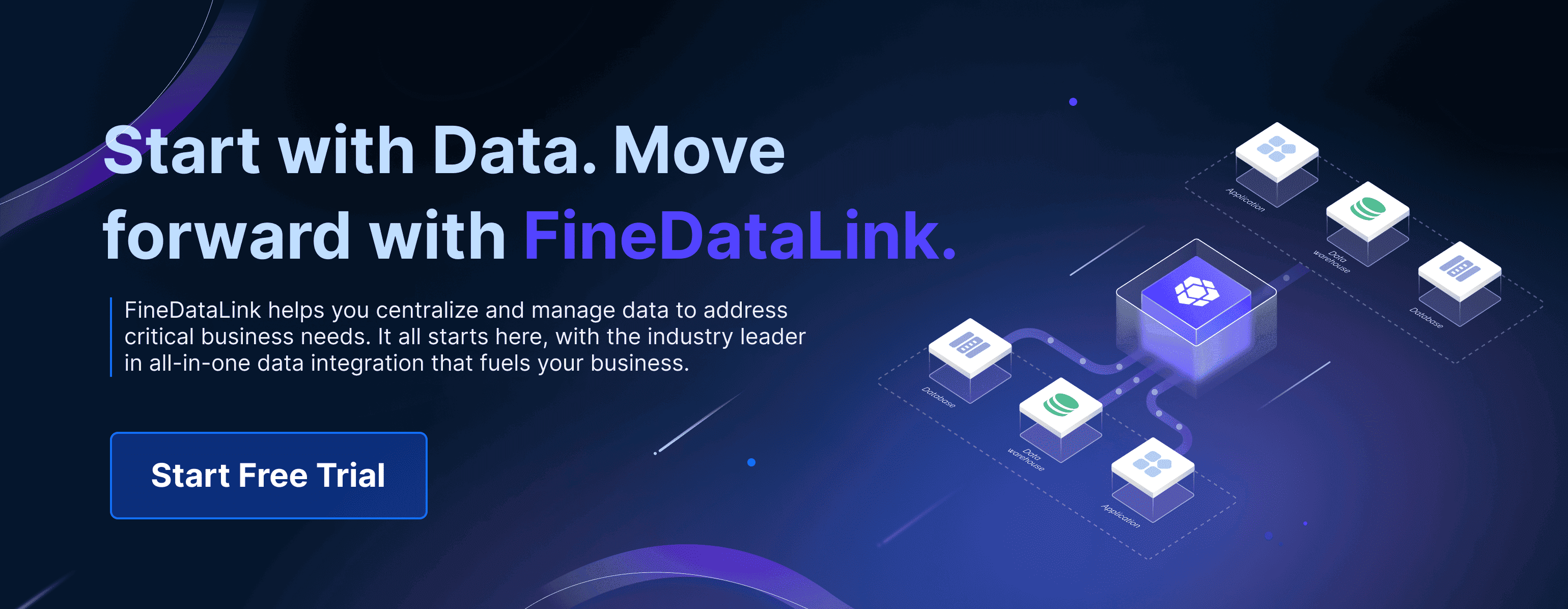
2.Google BigQuery
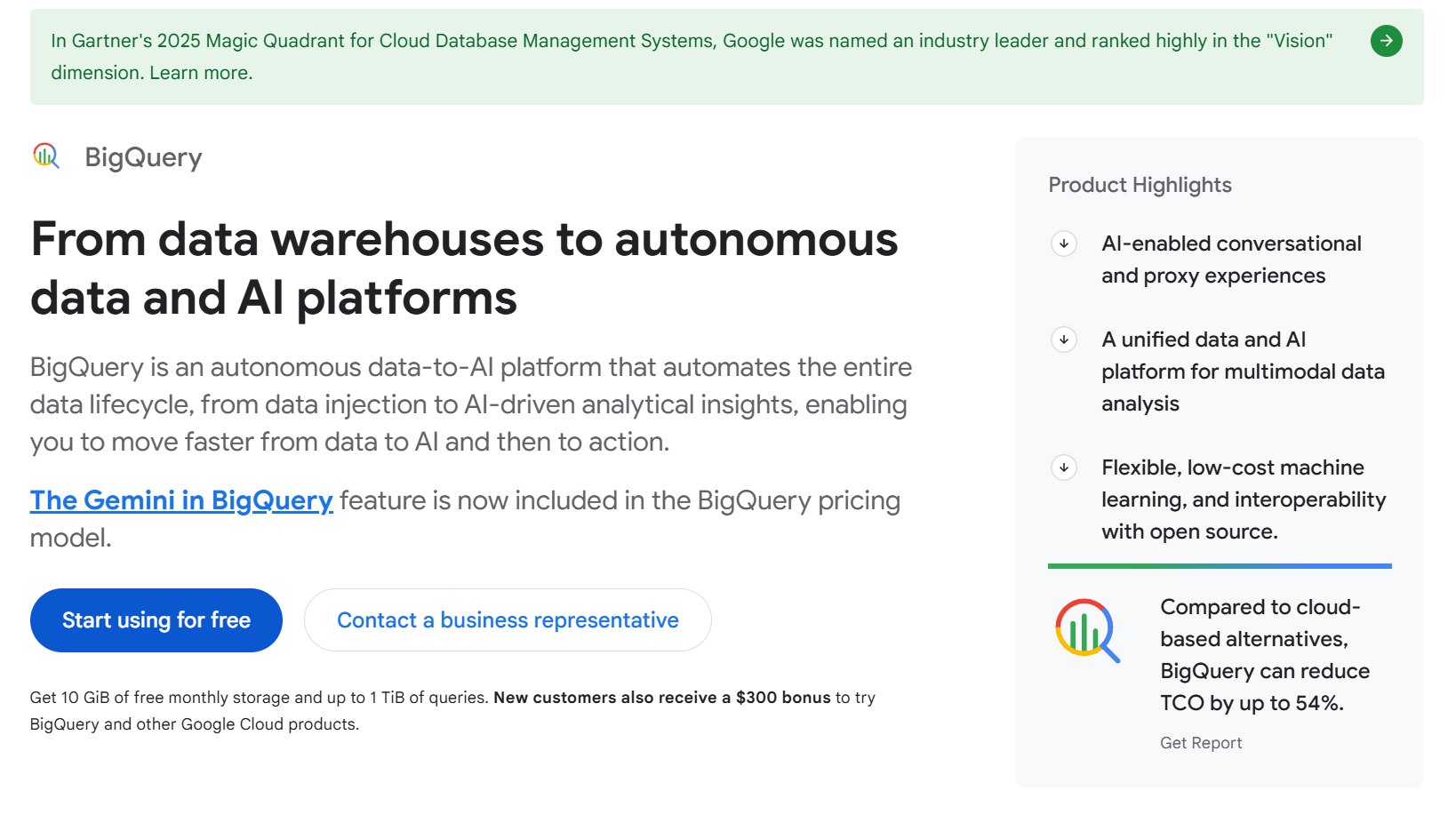
Website: https://cloud.google.com/bigquery
Google BigQuery is a serverless, highly scalable data warehouse designed for real-time analytics. Its architecture eliminates the need for infrastructure management, allowing you to focus entirely on analyzing your data. BigQuery automatically scales compute resources to handle varying workloads, ensuring consistent performance even during peak usage.
BigQuery’s pricing model is based on the volume of data processed per query. This flexibility makes it an excellent choice for businesses with fluctuating data needs. It supports ANSI-compliant SQL, enabling seamless integration with popular BI tools like Looker, Tableau, and Power BI. These integrations simplify the process of generating insights from your data.
BigQuery excels in real-time analytics. It processes large datasets quickly, making it ideal for businesses that need to monitor metrics or trends as they happen. Whether you’re tracking customer behavior or analyzing operational data, BigQuery provides the speed and scalability required for modern analytics.

3.Amazon Redshift
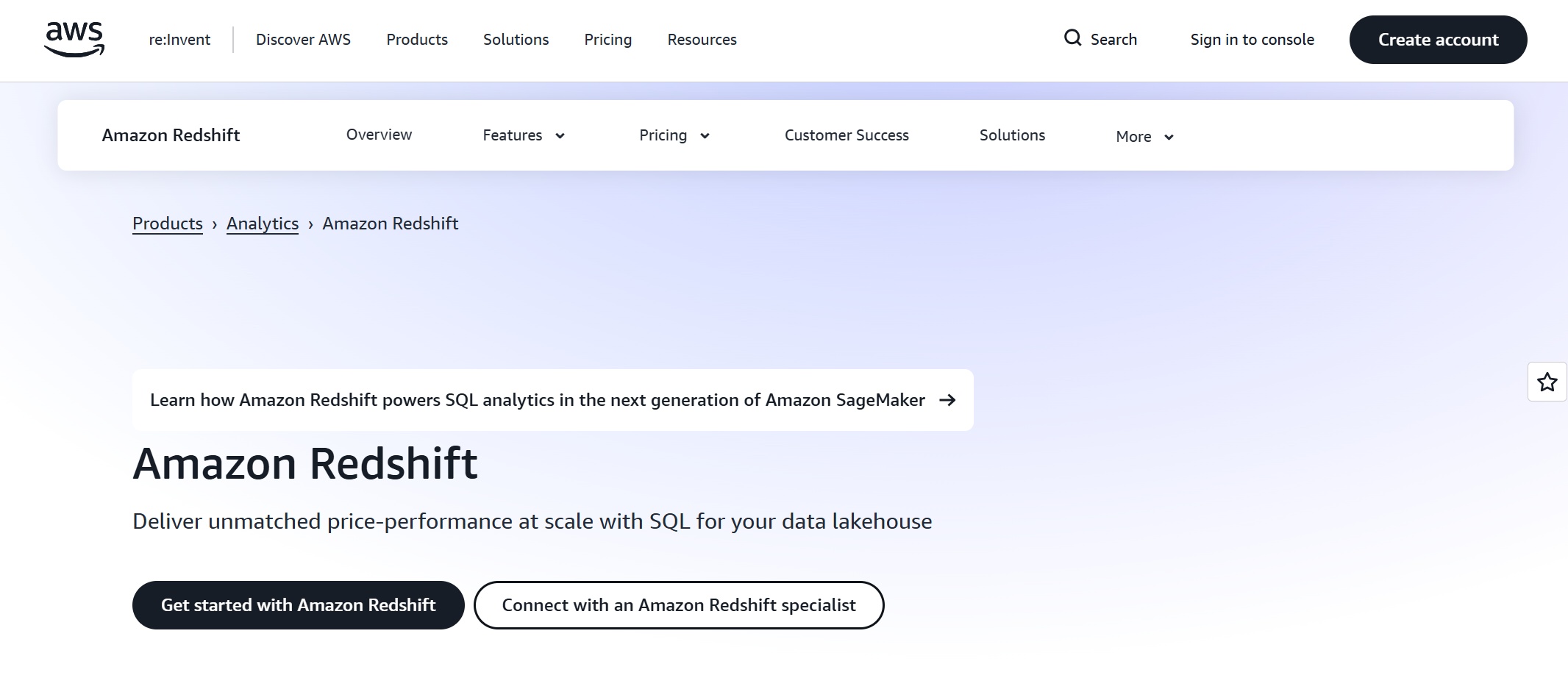
Website: https://aws.amazon.com/redshift/
Amazon Redshift is a fully managed, petabyte-scale data warehouse solution offered by AWS. It is optimized for structured data processing and leverages columnar storage along with massively parallel processing (MPP) to deliver high-performance querying. Redshift is particularly well-suited for businesses handling large-scale data analysis.
Redshift integrates seamlessly with other AWS services, creating a cohesive ecosystem for your data needs. This compatibility allows you to build end-to-end data pipelines, from ingestion to visualization. Redshift also supports advanced analytics use cases, including machine learning, through its integration with Amazon SageMaker.
Scalability is one of Redshift’s key strengths. You can start small and scale up as your data grows, ensuring cost efficiency. Redshift’s pricing model is subscription-based, which provides predictability for budgeting. Its robust architecture makes it a reliable choice for enterprises requiring consistent performance and deep integration with AWS.
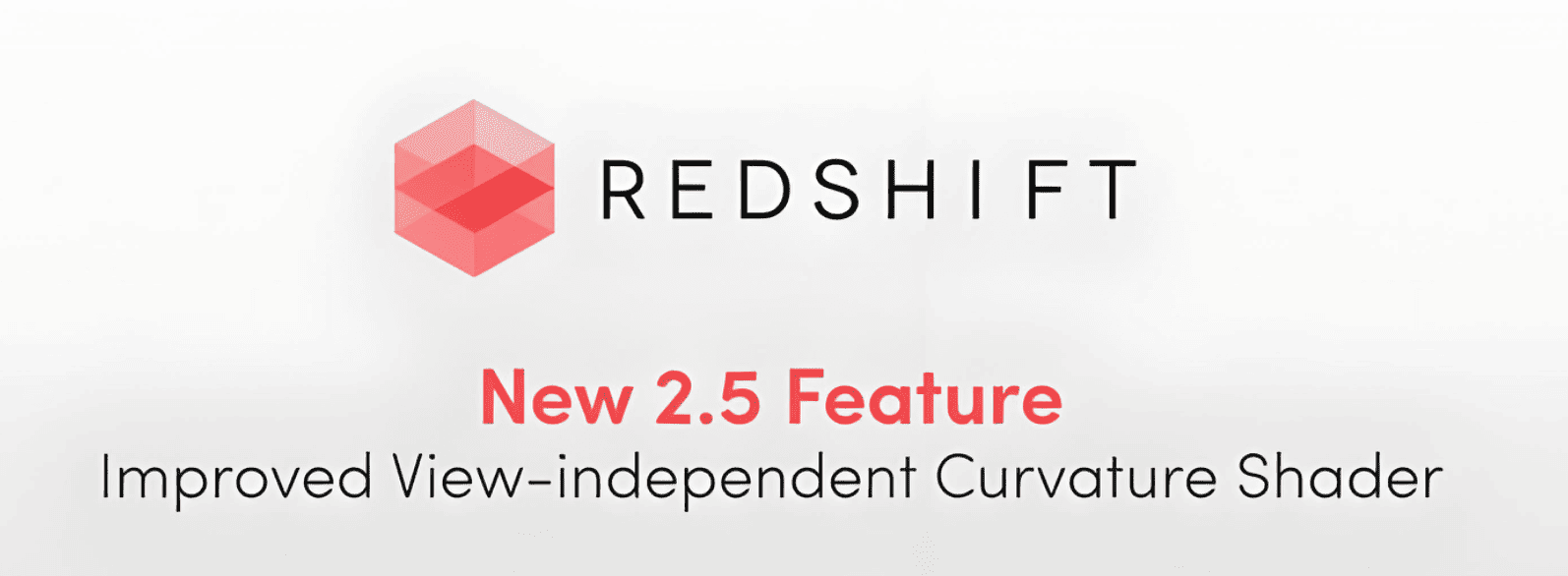
4.Snowflake

Website: https://www.snowflake.com/en/
Snowflake stands out for its unique architecture, which separates compute and storage resources. This design allows you to scale each component independently, providing unmatched flexibility. Snowflake supports multi-cloud deployment, enabling you to choose from platforms like AWS, Azure, or Google Cloud based on your preferences.
Snowflake’s data-sharing capabilities are among its most notable features. You can securely share data across your organization or with external partners without the need for complex ETL processes. This capability fosters collaboration and streamlines workflows, especially in data-driven industries.

Snowflake supports diverse data types, including structured, semi-structured, and unstructured formats. Its ANSI-compliant SQL capabilities make it easy to query and analyze data. Snowflake also offers automatic concurrency scaling, ensuring smooth performance even when multiple users access the system simultaneously. These features make it a versatile option for businesses with complex data needs.
“When comparing snowflake vs redshift vs bigquery, consider your specific requirements. Each platform offers unique advantages, from BigQuery’s real-time analytics to Redshift’s AWS integration and Snowflake’s independent scaling.”
5.Azure Synapse Analytics
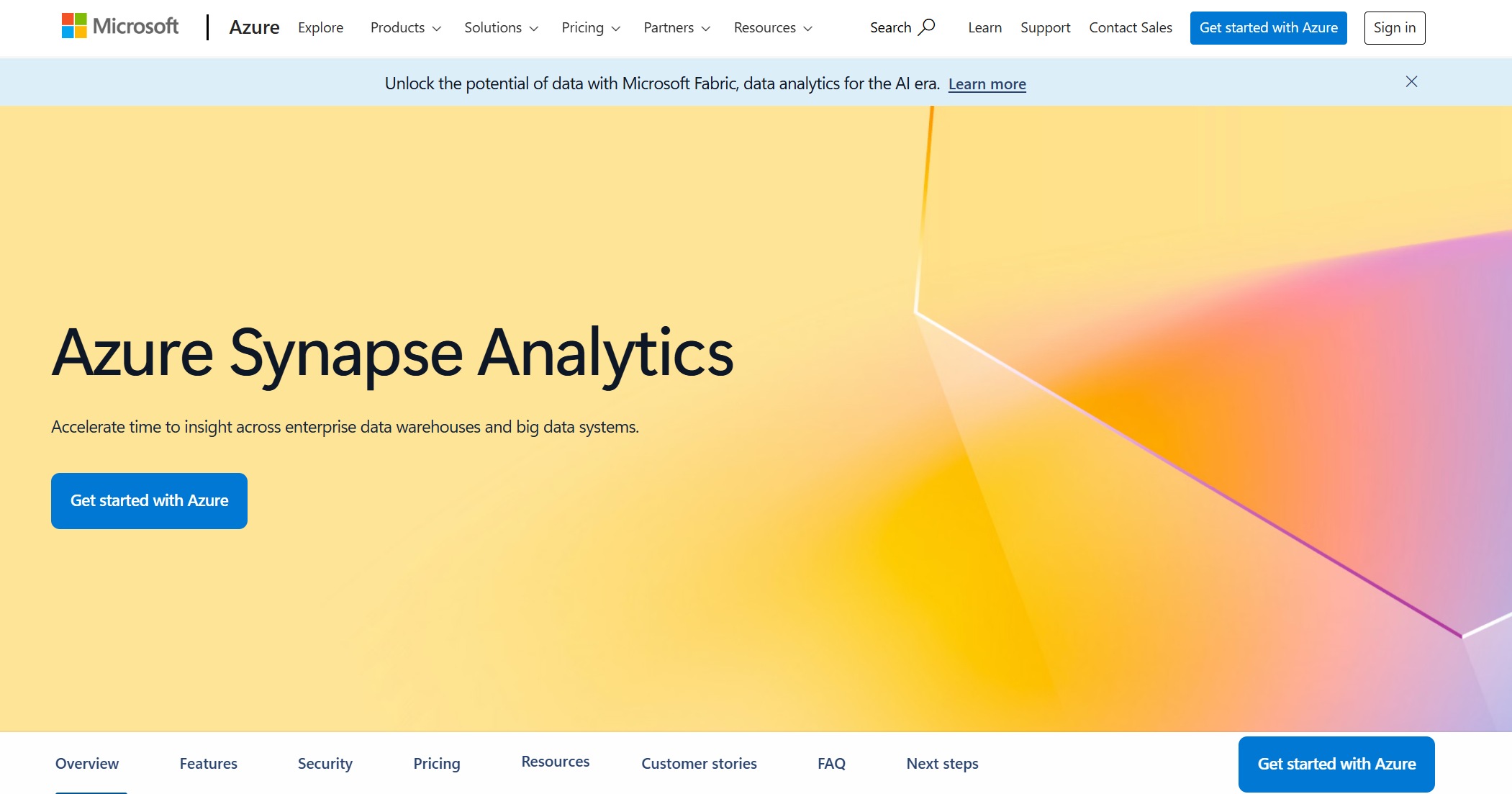
Website: https://azure.microsoft.com/en-us/products/synapse-analytics
Azure Synapse Analytics offers a unified platform that combines big data and data warehousing capabilities. It allows you to query both relational and non-relational data using familiar SQL syntax. This flexibility makes it an excellent choice for businesses managing diverse data types. Azure Synapse integrates seamlessly with other Microsoft services, such as Power BI and Azure Machine Learning, enabling you to build end-to-end analytics solutions.
One of its standout features is the ability to handle real-time workloads. With its serverless architecture, you can process streaming data and perform on-demand queries without worrying about infrastructure management. This capability ensures that your business remains agile and responsive to changing data needs. Azure Synapse also supports advanced security features, including data encryption and access controls, to protect sensitive information.

For scalability, Azure Synapse provides on-demand scaling of compute and storage resources. This ensures optimal performance, even as your data grows. Its pay-as-you-go pricing model offers cost efficiency, making it suitable for businesses of all sizes. Whether you’re running complex queries or integrating data from multiple sources, Azure Synapse delivers the tools you need for effective data management.
Databricks, IBM Db2, and Oracle Autonomous Data Warehouse
Databricks stands out as a data lakehouse platform that combines the best of data lakes and data warehouses. It is designed for big data processing and machine learning applications. Databricks supports real-time analytics and integrates with popular cloud platforms like AWS, Azure, and Google Cloud. Its collaborative environment allows data engineers and data scientists to work together seamlessly, making it ideal for AI-driven projects.

IBM Db2 offers a robust data warehouse solution tailored for enterprise needs. It excels in handling structured and unstructured data, providing advanced analytics capabilities. IBM Db2 integrates with various BI tools, enabling you to generate insights quickly. Its high-performance querying and scalability make it a reliable choice for businesses with large datasets.
Oracle Autonomous Data Warehouse simplifies data management with its self-driving capabilities. It automates tasks like tuning, patching, and backups, reducing the workload for your IT team. Oracle’s solution supports real-time analytics and provides built-in machine learning features. Its multi-cloud compatibility ensures flexibility, allowing you to deploy it on your preferred cloud platform.
Comparison of Data Warehouse Solutions
Architecture and Design
Serverless vs. Cluster-Based Architecture
The architecture of a data warehouse plays a crucial role in its performance and scalability. BigQuery adopts a serverless architecture, which eliminates the need for infrastructure management. This design allows you to focus entirely on analyzing your data without worrying about provisioning or maintaining servers. Serverless systems like BigQuery automatically allocate resources based on workload demands, ensuring optimal performance during peak usage.
In contrast, Redshift and Snowflake utilize cluster-based architectures. These systems require you to manage clusters of servers, offering greater control over resource allocation. While this approach demands more hands-on management, it provides flexibility for businesses with specific performance requirements. Snowflake’s unique architecture separates compute and storage resources, enabling independent scaling of each component. This feature ensures that you can optimize costs and performance based on your needs.
When comparing comparison of data warehouse solutions, consider your operational preferences. To learn more about data warehouse solutions, please click the button below.

Multi-Cloud and Hybrid Cloud Capabilities
Modern businesses often operate in multi-cloud or hybrid cloud environments. Snowflake excels in this area by supporting deployment across multiple cloud platforms, including AWS, Azure, and Google Cloud. This flexibility allows you to choose the cloud provider that aligns with your business strategy. Snowflake’s multi-cloud capabilities also enable seamless data sharing and collaboration across different environments.
Azure Synapse Analytics integrates effortlessly with other Microsoft services, making it an excellent choice for organizations already invested in the Azure ecosystem. Its hybrid cloud capabilities allow you to manage both on-premises and cloud-based data, ensuring a unified approach to data management architectures.
By contrast, BigQuery and Redshift primarily operate within their respective ecosystems—Google Cloud and AWS. While they offer robust features, their compatibility with other cloud platforms may be limited compared to Snowflake. If your business relies on diverse cloud warehousing solutions, Snowflake’s multi-cloud support provides a significant advantage.

Scalability and Performance
Auto-Scaling Capabilities
Scalability is a critical factor in choosing a cloud data warehouse. BigQuery leads in auto-scaling capabilities, dynamically adjusting compute resources to handle fluctuating workloads. This feature ensures consistent performance, even during high-demand periods. BigQuery’s serverless design further enhances its scalability, making it ideal for businesses with unpredictable data volumes.
Redshift offers elastic resizing, allowing you to scale clusters up or down based on your needs. While this process requires manual intervention, it provides flexibility for businesses managing large datasets. Snowflake takes scalability a step further with its automatic concurrency scaling. This feature ensures smooth performance when multiple users access the system simultaneously, making it a strong contender for enterprises with complex data querying requirements.
Query Performance and Optimization
Query performance directly impacts the efficiency of your data analytics efforts. Snowflake stands out for its ability to handle complex queries with speed and precision. Its architecture decouples compute and storage, allowing you to optimize each component independently. This design ensures that your queries run efficiently, regardless of data size or complexity.
Redshift leverages columnar storage and massively parallel processing (MPP) to deliver high-performance querying. These features make it well-suited for structured data analysis. However, its performance may vary depending on cluster configuration and workload distribution.
BigQuery excels in real-time analytics, processing large datasets quickly. Its serverless architecture optimizes query execution times, ensuring rapid insights. If your business relies on real-time data, BigQuery provides the speed and scalability needed for modern analytics.

Pricing Models
Pay-as-You-Go vs. Subscription-Based Pricing
Pricing models significantly influence the cost-effectiveness of data warehouse solutions. BigQuery adopts a pay-as-you-go model, charging based on the volume of data processed per query. This approach offers flexibility, allowing you to control costs by optimizing query usage. It suits businesses with variable workloads or those just starting with cloud-based analytics.
Redshift follows a subscription-based pricing model, providing predictable costs for budgeting. This model works well for businesses with consistent data needs, as it eliminates the uncertainty of fluctuating expenses. Snowflake combines elements of both models, charging based on actual computation time used. This hybrid approach ensures that you pay only for the resources you consume, making it a cost-effective option for businesses of all sizes.
Cost-Effectiveness for Small vs. Large Businesses
The cost-effectiveness of a data warehouse depends on your business size and data requirements. For small businesses, BigQuery’s pay-as-you-go model minimizes upfront costs, making it an accessible entry point into cloud-based analytics. Snowflake’s flexible pricing also appeals to startups, as it scales with your usage.
Large enterprises benefit from Redshift’s subscription model, which provides predictable costs for extensive data operations. Snowflake’s independent scaling of compute and storage further enhances its appeal for organizations managing complex workloads. By evaluating your specific needs, you can choose a solution that balances performance and cost.
Integrations and Ecosystem
Compatibility with BI tools (e.g., Tableau, Power BI, FineBI)
Data warehouses achieve their full potential when integrated with powerful business intelligence tools. Platforms like Tableau, Power BI, and FineBI enable you to visualize and analyze data effectively. These tools connect seamlessly with leading data warehouses such as BigQuery, Redshift, and Snowflake, ensuring a smooth workflow for your data analytics needs.
For example, BigQuery supports ANSI SQL, making it compatible with most BI tools. This compatibility allows you to create interactive dashboards and generate actionable insights without additional complexity. Similarly, Redshift integrates effortlessly with AWS services and BI platforms, enabling you to build end-to-end analytics pipelines. Snowflake takes integration a step further by offering native connectors for popular BI tools, ensuring ease of use and efficient data sharing.
By leveraging these integrations, you can transform raw data into meaningful visualizations. Whether you’re tracking sales performance or monitoring operational metrics, these tools enhance your ability to make data-driven decisions.
Support for ETL/ELT workflows with FineDataLink
Efficient data integration is critical for building a robust data warehouse. FanRuan's FineDataLink simplifies this process with its advanced ETL/ELT capabilities. It allows you to extract, transform, and load data from over 100 sources into a unified structure. This functionality ensures that your data warehouse remains accurate and up-to-date, even when handling real-time workloads. To learn more about data warehouse solutions, please click the button below.
FineDataLink’s low-code interface makes it accessible to users with varying technical expertise. You can design data pipelines using drag-and-drop functionality, reducing the time and effort required for complex tasks. Its real-time synchronization feature ensures minimal latency, enabling you to maintain a cloud-based infrastructure that supports dynamic analytics.
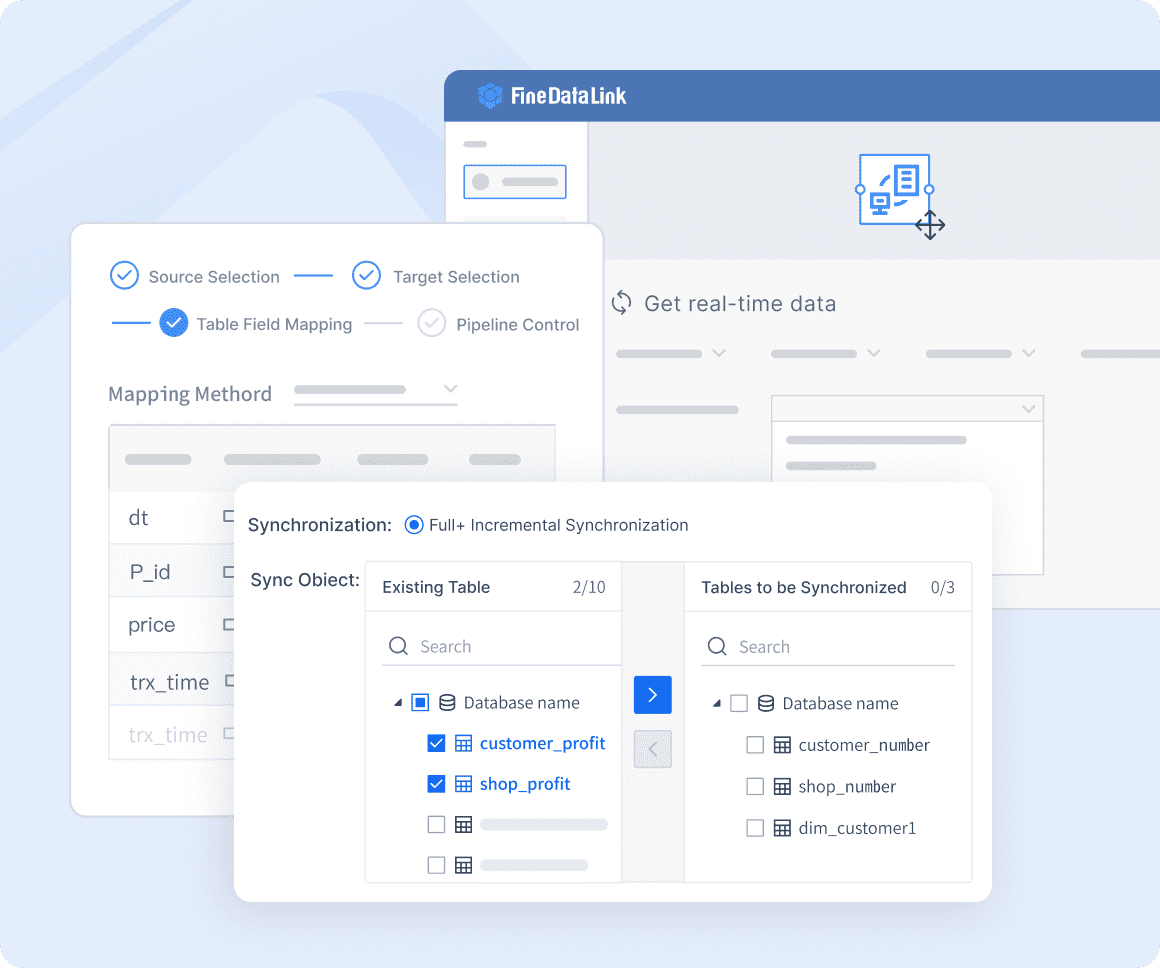
By integrating FineDataLink with your data warehouse, you can streamline workflows and focus on deriving value from your data. This tool enhances the efficiency of your data integration processes, making it an indispensable asset for modern businesses.
Security and Compliance
Data encryption and access controls
Security is a top priority when managing sensitive data. Leading data warehouses like Snowflake, Redshift, and BigQuery implement robust encryption protocols to protect your information. These platforms encrypt data both in transit and at rest, ensuring that unauthorized access is prevented.
Access controls further enhance security by allowing you to define user roles and permissions. For instance, Azure Synapse Analytics provides advanced access management features, enabling you to restrict data access based on user responsibilities. These measures ensure that only authorized personnel can view or modify sensitive information.
Compliance with industry standards (e.g., GDPR, HIPAA)
Compliance with regulatory standards is essential for businesses operating in industries like healthcare and finance. Data warehouses must adhere to frameworks such as GDPR and HIPAA to ensure legal and ethical data management. Snowflake and Redshift offer built-in compliance features, including audit logs and data masking, to help you meet these requirements.
BigQuery also supports compliance by providing detailed documentation and tools for managing data privacy. These features simplify the process of aligning your data practices with industry standards. By choosing a compliant data warehouse, you can build trust with your customers and avoid potential legal issues.
Use Cases and Industry Fit
Best for startups and small businesses
Startups and small businesses often prioritize cost-effectiveness and ease of use when selecting a data warehouse. BigQuery’s pay-as-you-go pricing model makes it an attractive option for organizations with limited budgets. Its serverless architecture eliminates the need for infrastructure management, allowing you to focus on scaling your business.
Best for enterprises with complex data needs
Enterprises managing large datasets require scalable and flexible solutions. Snowflake’s architecture, which separates compute and storage, provides unmatched scalability. This feature allows you to handle complex queries and diverse workloads efficiently. Redshift also caters to enterprise needs with its robust integration capabilities and high-performance querying.
Industry-specific applications (e.g., healthcare, finance)
Certain industries demand specialized features from their data warehouses. In healthcare, compliance with HIPAA is crucial. Azure Synapse Analytics offers advanced security features and seamless integration with Microsoft services, making it ideal for managing sensitive patient data. In finance, real-time workloads are essential for tracking market trends. Databricks excels in this area by supporting real-time analytics and machine learning applications.
By evaluating your specific requirements, you can select a data warehouse that aligns with your industry’s needs. Whether you’re in healthcare, finance, or retail, these platforms provide the tools necessary for effective data management and analytics.
Summary Table of Key Comparisons
When choosing a data warehouse solution, having a clear comparison of their core attributes can simplify your decision-making process. Below is a quick reference table summarizing the key differences in features, pricing, performance, and use cases among the top platforms.
Quick Reference Table
Features and Capabilities
Each data warehouse platform offers unique features tailored to specific business needs.
- Google BigQuery: Known for its serverless architecture, BigQuery excels in real-time analytics and automatic resource scaling. It supports ANSI SQL and integrates seamlessly with popular BI tools like Tableau and Power BI.
- Amazon Redshift: Redshift provides robust integration with AWS services and is optimized for structured data processing. Its columnar storage and massively parallel processing (MPP) ensure high-performance querying.
- Snowflake: Snowflake’s standout feature is its architecture, which separates compute and storage resources. This design allows independent scaling and supports multi-cloud deployment across AWS, Azure, and Google Cloud.
- Azure Synapse Analytics: Synapse combines big data and data warehousing capabilities. It supports querying both relational and non-relational data, making it versatile for diverse data types.
- FanRuan's FineDataLink: FineDataLink specializes in real-time data synchronization and advanced ETL/ELT workflows. Its low-code interface simplifies data integration, making it accessible to users with varying technical expertise.
Pricing and Performance
Pricing models and performance capabilities vary significantly across platforms.
- BigQuery: Operates on a pay-as-you-go model, charging based on the volume of data processed per query. This flexibility suits businesses with fluctuating workloads. BigQuery also leads in real-time analytics performance.
- Redshift: Uses a subscription-based pricing model, offering predictable costs for consistent data needs. Its performance depends on cluster configuration and workload distribution.
- Snowflake: Combines pay-as-you-go and subscription elements, charging based on actual computation time. Its automatic concurrency scaling ensures smooth performance during high-demand periods.
- Azure Synapse Analytics: Offers a pay-as-you-go model with on-demand scaling of compute and storage resources. This ensures cost efficiency while maintaining performance.
- FineDataLink: Provides affordable pricing with advanced features like real-time synchronization and API integration. Its low-code platform enhances efficiency, reducing the time spent on complex tasks.
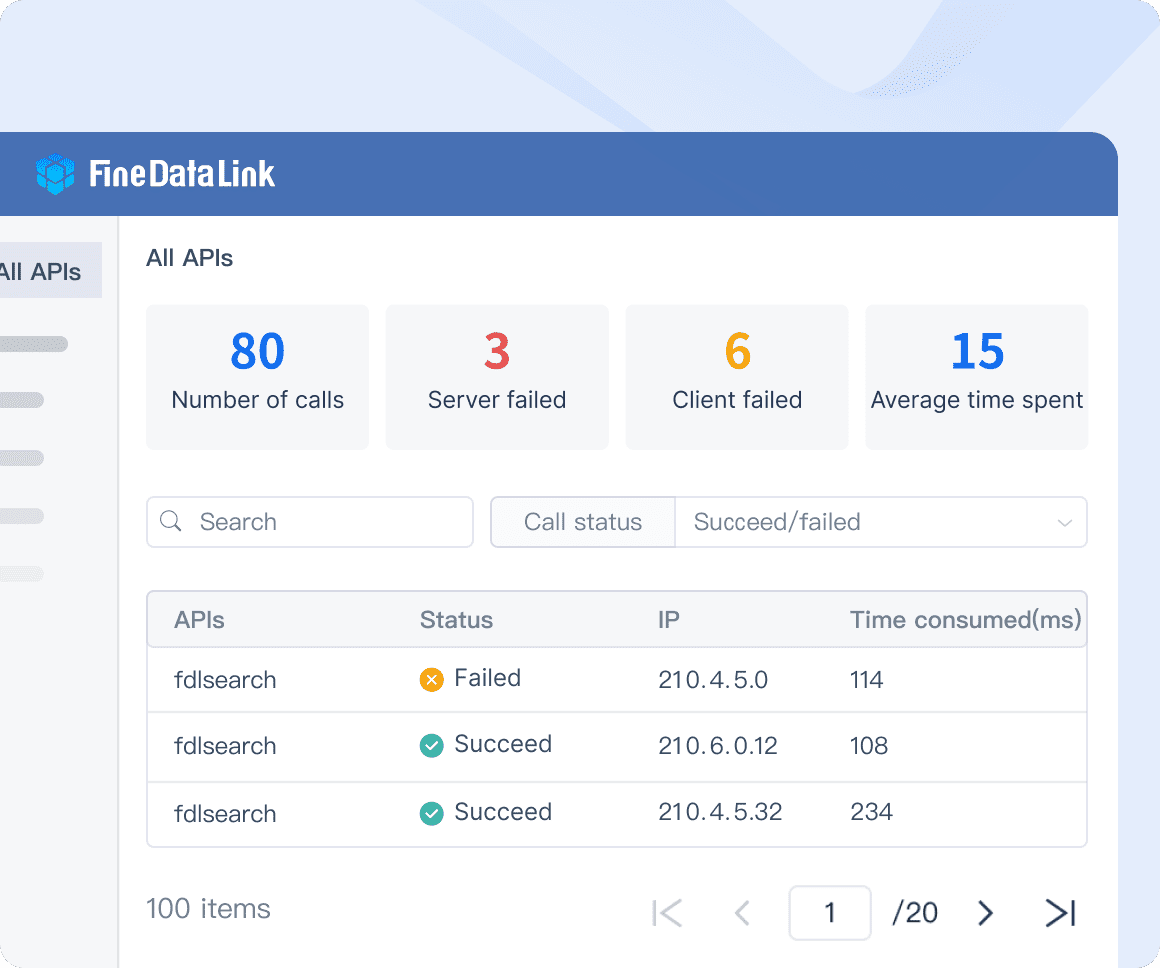
Best Use Cases
Different platforms cater to varying business sizes and industry requirements.
- BigQuery: Ideal for startups and small businesses due to its flexible pricing and ease of use. It’s also a strong choice for real-time analytics.
- Redshift: Best suited for enterprises requiring deep integration with AWS services and handling large-scale structured data analysis.
- Snowflake: A versatile option for businesses with complex data needs. Its multi-cloud support and independent scaling make it suitable for enterprises managing diverse workloads.
- Azure Synapse Analytics: Perfect for organizations already invested in the Microsoft ecosystem. It’s also a great fit for industries requiring advanced security features, such as healthcare and finance.
- FineDataLink: Essential for businesses aiming to build real-time data warehouses or streamline data integration processes. Its compatibility with over 100 data sources makes it a valuable tool for companies managing diverse systems.
“Choosing the right data warehouse depends on your specific needs. Evaluate features, pricing, and performance to find the best fit for your business.”
Choosing the right data warehouse solution depends on your business size, budget, and specific use case. Platforms like Snowflake, Redshift, and BigQuery each excel in unique areas. Snowflake offers unmatched flexibility with its independent scaling, while Redshift integrates seamlessly with AWS for large-scale analysis. BigQuery stands out for real-time analytics and serverless architecture. Evaluating "snowflake vs redshift vs bigquery" helps you align features with your needs. FanRuan's FineDataLink enhances data integration, enabling real-time synchronization and efficient ETL workflows. It ensures your data warehouse operates at peak performance, supporting your analytics and decision-making goals. To learn more about data warehouse solutions, please click the button below.

Click the banner below to experience FineDataLink for free and empower your enterprise to convert data into productivity!
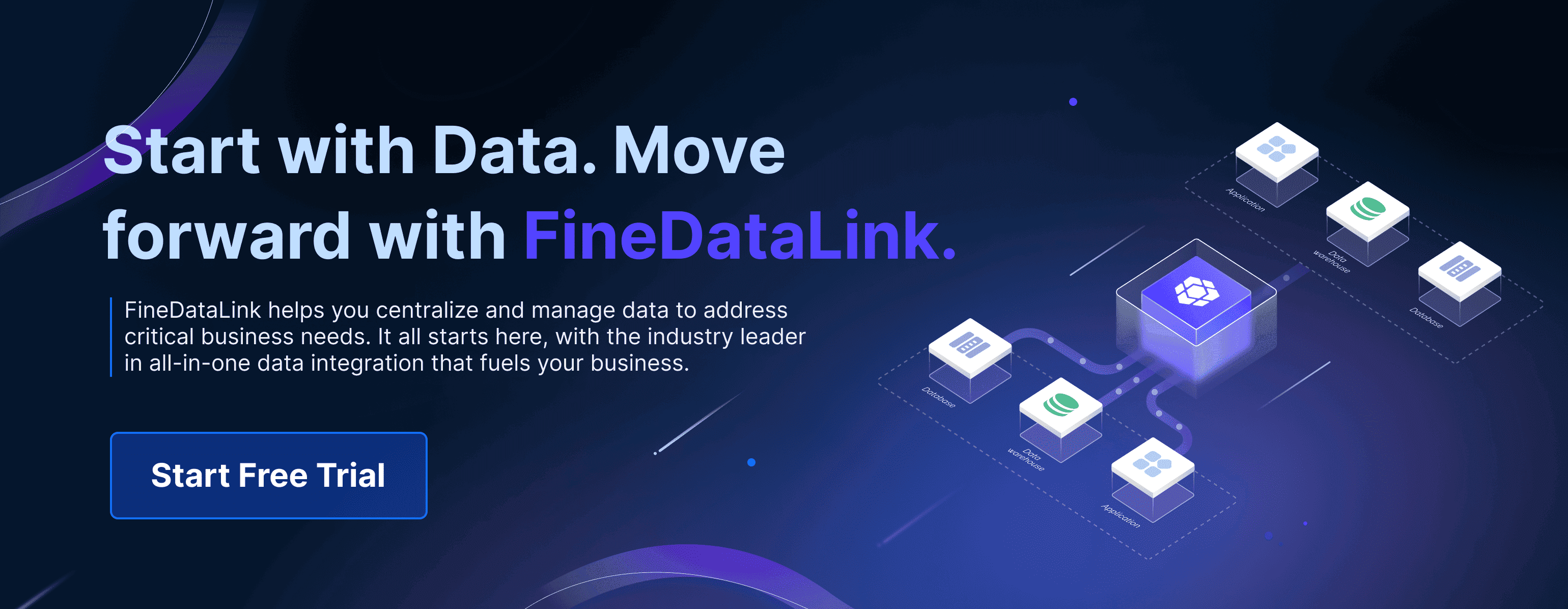
Continue Reading about Data Management
Essential Data Integration: A Beginner's Guide
Top Data Integration Tools: 2025 Guide
Top 10 Data Integration Software for 2025
What is API Data Integration? API vs Data Integration
Best Data Integration Platforms to Use in 2025
Enterprise Data Integration: A Comprehensive Guide
Top 7 Data Integration Patterns for Modern Enterprises
FAQ

The Author
Howard
Data Management Engineer & Data Research Expert at FanRuan
Related Articles

What is a data management platform in 2025
A data management platform in 2025 centralizes, organizes, and activates business data, enabling smarter decisions and real-time insights across industries.
Howard
Dec 22, 2025

Top 10 Database Management Tools for 2025
See the top 10 database management tools for 2025, comparing features, security, and scalability to help you choose the right solution for your business.
Howard
Dec 17, 2025

Best Data Lake Vendors For Enterprise Needs
Compare top data lake vendors for enterprise needs. See which platforms offer the best scalability, integration, and security for your business.
Howard
Dec 07, 2025



